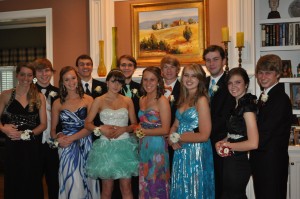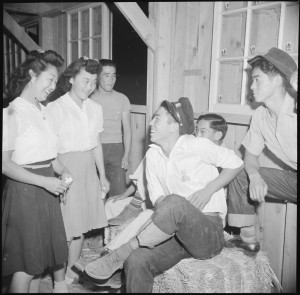For this week’s Education Focus, we’ll take a look at a quintessential American school experience: Prom.
Prom comes from the word “promenade.” It is one of the major high school dances held in the year. It is sometimes referred to as the senior prom, as it typically marks one of the final social events in a high school student’s career, but sometimes there are other students (for example, juniors) who attend as well, as long as one of the couple is a senior. Most often, a boy will ask his steady girlfriend to the prom, but sometimes a couple will go as “just friends.”
Prom is a formal dance. Girls usually wear a fancy, expensive dress and get their hair done professionally at a beauty salon. To go with his date’s dress, a boy will get her a corsage, often worn on the wrist. Boys, on the other hand, rent a black or white tuxedo. His outfit is completed with a boutonniere from his date. Many parents will take pictures of the couples before they ride off in a hired limousine to take them to the site of the prom.
Sometime the prom is held at an outside venue, like a banquet hall, but of course such an arrangement would add to the cost of the ticket, so to keep it affordable for most students, many schools opt to have the prom in the school gymnasium, which is decorated for the big day. Food may be served, but the focus on the evening is on dancing. There are often other activities at prom, such as voting for a prom king and prom queen.
Afterwards, there is often a post-prom party. These are usually chaperoned, to help reduce the incidence of teenage drinking. Post-prom activities range from bowling parties to picnics at a park, or even a trip to an amusement park. Many students look back at prom as a highlight of their high school years.


